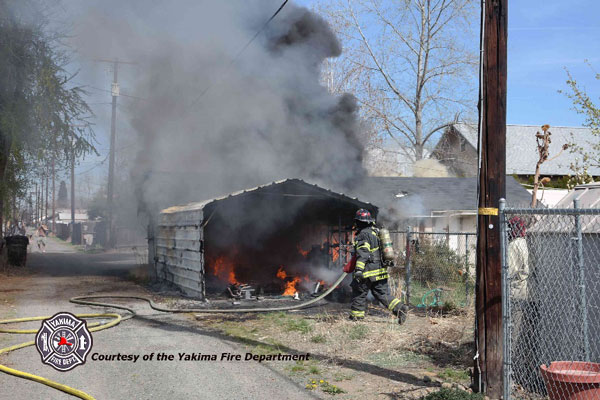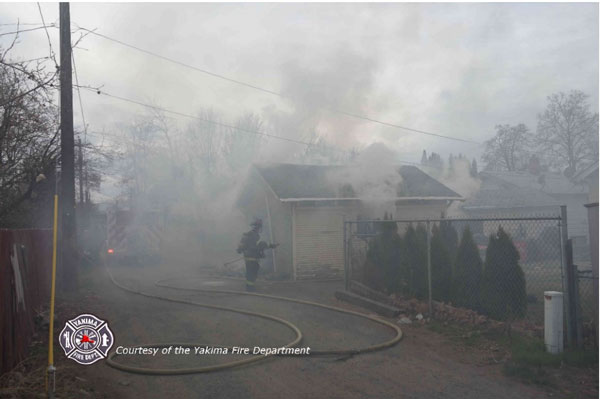
By Alex Langbell
Recently, the Yakima (WA) Fire Department Investigation Division was able to quickly identify and apprehend a serial arsonist responsible for a string of residential alley fires. His modus operandi (MO) was lighting debris and other material adjacent to structures using a handful wooden matches rubber banded together. He was charged on four of the fires but believed to be responsible for well more than a dozen in a three-month span. I was able to respond to six of them, often times arriving second or third on scene. Alley fires can be challenging in many ways with multiple factors that go against us as firefighters.

Location
Many times the exact location of the fire is unknown. The reported address is usually one that is either that of the reporting party or an adjacent address. Most times alley fires are found by the column of smoke (in daylight) or the visible flames (in the dark). To overcome this challenge, good first-in response area awareness is necessary. Know which blocks have alleys and being familiar with those alleys. Know where they lead and if they dead-end and how to approach and from which direction. Crews should drive alleys on a regular basis looking for hazards, water supply, and accessibility.
Unknown Fire Type
Another challenge is the uncertainty of what is on fire. How many times do we get dispatched to an unknown-type fire in an alley? Alleys have many different objects that can become involved, including garbage and debris, stored wood and lumber, outbuildings, garages, vehicles, and houses. Crews can identify the amount of exposures and hazards by driving their area and becoming familiar with what’s in those alleys.
Hazards
There are numerous hazards in fighting alley fires. Multiple exposures, power lines and utility drops, gas meters, access and egress issues, lack of water supply, lack of street lights. The list is long and we need to be aware of all of these. Driving alleys help identify what hazards we might face and where.

Fighting Alley Fires
As first-arriving officer you have to determine, can you fight fire in the alley without exposing the crew and apparatus to the hazards previously mentioned? There are three ways that I’ve seen that are effective in fighting alley fires and the way you chose to fight depends on variables such as access, exposures, water supply, and hazards.
The first way is to drive past the fire and attacking from the rear. The advantage of this is you immediately access the fire and able to get a quick knockdown. The disadvantage of this is the lack of water supply, hazards you might face, and the congested area for apparatus and crews to operate. You should really only do this if the fire is small and you are positioned to quickly move the apparatus if you are not able to control the fire.
The second way is to attack from the street or address side. The advantages are there is room for resources and water supply is usually easily accessible. Disadvantages include longer hoselays and gaining access to the fire due to obstacles that may be present such as fences with locked gates, houses, detached garages, outbuildings, and vehicles.
The third way is a combination of both. One engine attacks from the alley side, leaving the apparatus in the street extending hose to the fire. Additional apparatus stage on the address/street side and support with equipment and manpower. Incident command is established on the address/street side where resources can be managed with easy access and egress of incoming apparatus. On large fires, a division should be established to manage the operations from the alley. The advantage to this is that crews can make a direct attack on the fire with few obstacles in the way, you do not subject your apparatus to the numerous hazards found in the alley, and water supply can be established easier if needed. The biggest disadvantage is the length of hose it may take on your longer alleys.
As a first-in officer, try and get a good look at what is involved before committing yourself and don’t be afraid to direct incoming apparatus to a better location if they can perform a safer and more effective fire attack. Alley fires can be extremely challenging to us as firefighters and officers. We need to be able to think quickly and make the right decision to prevent the numerous exposures found in alley from becoming involved while keeping us and our equipment safe.
Alex Langbell is a lieutenant with the Yakima (WA) Fire Department.
MORE TRAINING BULLETINS

